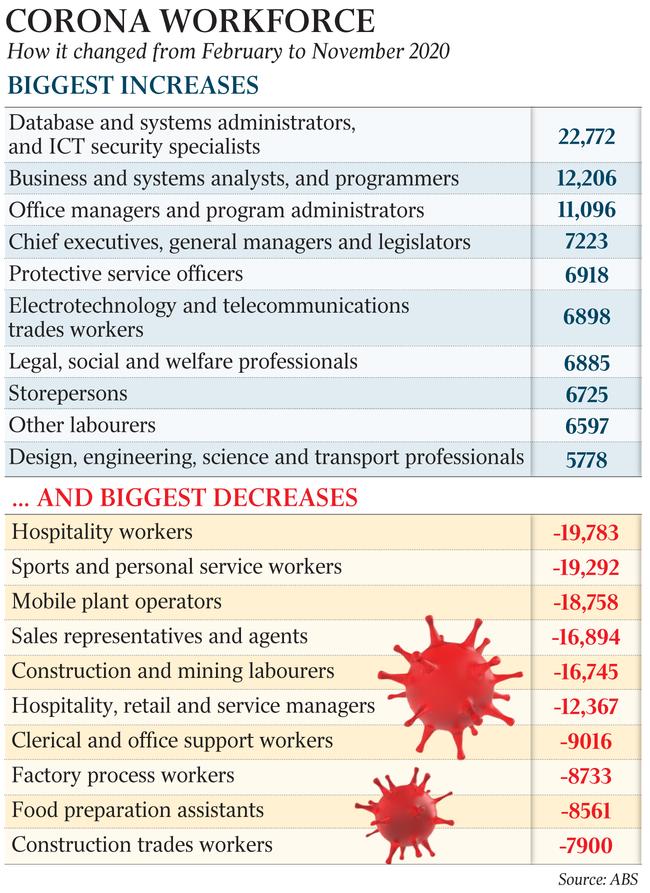Winners, losers in COVID-19 pandemic job upheaval
The COVID recession has triggered a boom in handyperson, gardening and cyber security jobs.

The COVID recession has triggered a boom in handyperson, gardening and cyber security jobs, while employment in occupations such as house cleaners, waiters, concreters and beauty therapists has suffered dramatic falls.
Analysis of the latest detailed labour force data from the Australian Bureau of Statistics reveals the winners and losers by individual job description between February and November 2020.
As more Australians worked from out of the office during the pandemic, spawning a surge in interest in home improvement and items such as furniture and electrical goods, the number of handypersons jumped by a third to 59,000 over the nine months to November, the ABS data shows.
There were 27 per cent more gardeners, with 87,000 Australians reporting that was their job in November. The digitalisation trend was also reflected in the figures, with the number of database and system administrators and IT security experts jumping by 23 per cent to 50,000.
There are 357 occupations included in the labour force survey, the majority of which have only small numbers of Australians working in them, making the data “noisy” and volatile from month-to-month, according to University of Melbourne economics professor Jeff Borland.
Restricting the jobs where employment levels are above 35,000 reduces the number of individual occupations to 108.
Separate research by Professor Borland shows how jobs that can be worked from home have been shielded during the pandemic.
Employment in occupations requiring a high level of social contact and that need to be done in a place of work collapsed by 13.3 per cent between February and May — the peak of the COVID-related job losses — and remained down by 5 per cent versus pre-COVID levels in November.
These jobs included early childhood teachers, physiotherapists, bricklayers, chefs, hairdressers, waiters and mail sorters.
In contrast, occupations with little or no need for social contact and which were easily worked at home fell by only 1.7 per cent at the height of the national lockdown, and were 3.4 per cent higher by November.
“My feeling is that as long as COVID is around, what happens will continue to be determined by these two characteristics,” Professor Borland said.
He said the pandemic may have helped accelerate a structural labour market trend away from “routine” jobs and towards work which could not be easily replicated by computer code and technology.
Professor Borland observed that there was a heavy overlap between such “non-routine” work and jobs that could be worked from home.





To join the conversation, please log in. Don't have an account? Register
Join the conversation, you are commenting as Logout